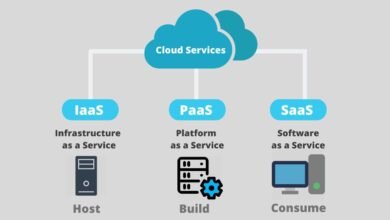
The artificial intelligence revolution has fundamentally transformed from a futuristic concept into an essential business imperative that organizations across all industries can no longer afford to ignore. As we progress through 2025, evaluating AI solutions has emerged as one of the most critical strategic decisions facing business leaders, technology executives, and innovation teams worldwide. The marketplace is now saturated with AI vendors promising revolutionary outcomes, making it increasingly difficult for organizations to distinguish between genuine innovation and sophisticated marketing rhetoric.
From machine learning platforms and natural language processing tools to computer vision systems and predictive analytics solutions, the options available are both overwhelming and exciting. Yet despite widespread adoption, research indicates that while almost all companies invest in AI initiatives, only a small fraction believe they have reached true maturity in their implementations. This gap between adoption and effective utilization highlights the crucial importance of selecting the right AI technology for your specific organizational context.
Choosing the right AI solution requires a methodical, comprehensive approach that carefully balances technical capabilities with business objectives, regulatory compliance with innovation speed, and short-term costs with long-term value creation. Organizations must develop robust evaluation frameworks that consider multiple factors, including data infrastructure readiness, scalability requirements, integration complexity, vendor reliability, security protocols, and measurable return on investment. The stakes are exceptionally high—selecting the wrong solution can result in wasted financial resources, significant operational disruptions, damaged stakeholder confidence, and missed competitive opportunities that may take years to recover from.
This comprehensive guide provides business leaders, technology decision-makers, IT professionals, and innovation teams with a structured methodology for assessing AI technologies. Whether you’re a startup exploring your first AI deployment or an established enterprise seeking to scale existing initiatives, knowing how to rigorously evaluate potential solutions will empower you to make informed decisions that drive sustainable business value. We’ll explore the essential evaluation criteria, practical assessment frameworks, strategic considerations, and implementation best practices that separate successful AI implementations from costly failures, ensuring your organization can confidently navigate the complex and rapidly evolving landscape of artificial intelligence solutions.
Your Organization’s AI Readiness
Before diving into the evaluation of external AI solutions, organizations must conduct a thorough and honest assessment of their current technological maturity and readiness for artificial intelligence adoption. This foundational step is absolutely critical because it determines whether your organization possesses the necessary infrastructure, culture, data resources, and capabilities to successfully implement and derive meaningful value from AI technologies. Rushing into AI adoption without a proper readiness assessment often leads to implementation failures, regardless of how sophisticated the chosen technology might be.
Assessing Data Infrastructure and Quality
The effectiveness of any AI solution fundamentally depends on the quality, accessibility, volume, and governance of your organization’s data assets. Begin your readiness assessment by conducting a comprehensive audit of your existing data infrastructure to identify what data you currently collect, where it resides across your systems, how it’s structured and organized, what formats it uses, and who has access to it. Machine learning algorithms and AI systems require substantial volumes of clean, well-organized, consistently formatted data to generate accurate predictions, meaningful insights, and reliable recommendations.
Organizations must critically evaluate whether their data is stored in fragmented silos across disconnected systems or in integrated repositories that facilitate seamless access and analysis. Fragmented data architectures significantly complicate AI implementation efforts, often requiring extensive data integration projects before AI initiatives can even begin. Additionally, conduct a thorough assessment of your data quality by examining accuracy rates, completeness levels, consistency across systems, timeliness of updates, and the presence of duplicate or contradictory records. Poor data quality directly translates to unreliable AI outputs, potentially causing more operational harm than benefit.
Consider your organization’s data governance framework, including established policies around data privacy, security protocols, regulatory compliance, ethical usage guidelines, and data lifecycle management. With increasing regulatory scrutiny around AI applications and data protection through regulations like GDPR, CCPA, HIPAA, and industry-specific requirements, ensuring your data practices align with legal requirements is absolutely non-negotiable when evaluating AI solutions. Organizations lacking mature data governance may need to invest significantly in foundational data capabilities before pursuing advanced AI implementations.
Identifying Clear Business Objectives and Use Cases
Successful AI adoption requires crystal-clear alignment between technological capabilities and specific business challenges or opportunities. Organizations should begin by systematically identifying operational pain points, process inefficiencies, competitive threats, or growth opportunities where artificial intelligence could deliver measurable, quantifiable impact. Rather than implementing AI for its own sake or following industry trends blindly, focus intensely on use cases that address concrete business objectives such as reducing operational costs, improving customer experience and satisfaction, accelerating decision-making processes, enhancing product quality, or creating entirely new revenue streams.
Prioritize potential use cases based on multiple factors, including potential business value, technical feasibility given your current capabilities, data availability and quality, organizational readiness for change, and alignment with strategic priorities. Research consistently shows that focusing on a small number of high-impact use cases in proven areas can accelerate ROI and build organizational confidence more effectively than spreading resources across numerous initiatives.
Document specific, measurable success metrics for each identified use case, establishing clear baseline measurements before implementation begins. These metrics might include processing time reduction percentages, error rate improvements, customer satisfaction score increases, revenue growth attributions, cost savings calculations, or efficiency gains. Clear, quantifiable objectives provide the essential foundation for measuring ROI accurately and guiding AI solution selection decisions with data rather than intuition.
Evaluating Organizational Culture and Change Readiness
AI implementation represents a significant organizational change that extends far beyond technology deployment alone. Assess your organization’s cultural readiness by examining leadership commitment levels, employee attitudes toward automation and technological change, existing change management capabilities, and general willingness to adopt new workflows, processes, and ways of working. Organizations with cultures resistant to change or lacking leadership sponsorship face substantially higher risks of implementation failure.
Organizations must carefully consider potential workforce impacts, including legitimate job displacement concerns, skill gaps requiring training investments, and the psychological effects of working alongside AI systems. Successful AI adoption requires transparent, honest communication about how artificial intelligence will augment rather than replace human capabilities, alongside comprehensive upskilling programs that prepare employees for evolving roles in AI-augmented environments.
Evaluate whether your organization possesses the necessary technical expertise to successfully manage AI projects, including data scientists, machine learning engineers, AI ethicists, business analysts who can bridge technical and operational domains, and project managers experienced in technology initiatives. If internal capabilities are insufficient, determine your strategy—whether you’ll invest in building in-house expertise through hiring and training, partner with external consultants and system integrators, or rely primarily on vendor-provided support services and managed offerings.
Key Criteria for Evaluating AI Solutions

Once organizational readiness has been thoroughly assessed and confirmed, applying systematic evaluation criteria helps differentiate between AI solutions that will deliver genuine business value and those that will fall short of expectations or create more problems than they solve. These comprehensive criteria provide a structured framework for objectively assessing vendors, technologies, platforms, and implementation approaches.
Technical Capabilities and Performance Metrics
The technical foundation of any AI solution ultimately determines its ability to solve your specific business challenges effectively and reliably. Begin your technical evaluation by examining the underlying algorithms and models the solution employs, including whether it uses supervised learning, unsupervised learning, reinforcement learning, deep learning, or hybrid approaches combining multiple techniques. Different machine learning techniques excel at different tasks, so precise alignment with your specific use case requirements is absolutely critical for success.
Assess the solution’s accuracy and performance metrics that are directly relevant to your intended application. For classification problems, carefully examine precision rates, recall percentages, F1 scores, and confusion matrices that reveal true positives, false positives, true negatives, and false negatives. For regression tasks, evaluate mean absolute error, root mean square error, and R-squared values. For natural language processing applications, consider BLEU scores, perplexity measurements, and semantic similarity assessments. Request benchmark results on datasets similar to your own rather than accepting generic performance claims.
Consider the solution’s ability to handle your specific data volume requirements, processing velocity needs, and data variety characteristics. Evaluate processing speed capabilities, latency measurements for real-time applications, throughput capacity for high-volume scenarios, and whether the underlying architecture can scale horizontally by adding more servers or vertically by upgrading existing infrastructure as your needs grow over time.
Examine the solution’s model explainability and interpretability features carefully. Black-box AI models that provide accurate predictions without explanation may be completely unsuitable for regulated industries or high-stakes decisions where transparency is essential for compliance, trust, or ethical reasons. Solutions offering feature importance analysis, decision tree visualizations, SHAP values, counterfactual explanations, or attention mechanisms enable a better of how decisions are made and foster appropriate trust in AI-driven recommendations.
Integration and Compatibility Considerations
Even the most technically sophisticated AI solution delivers minimal value if it cannot integrate seamlessly with your existing technology ecosystem and workflows. Evaluate compatibility thoroughly with your current systems, including enterprise resource planning platforms, customer relationship management tools, data warehouses and lakes, business intelligence solutions, operational software, and industry-specific applications that form the backbone of your operations.
Assess the availability, quality, and completeness of APIs (Application Programming Interfaces) that facilitate integration between systems. Well-documented RESTful APIs, flexible webhooks for event-driven integrations, comprehensive SDKs in relevant programming languages like Python, Java, and JavaScript, and pre-built connectors for common enterprise platforms substantially reduce implementation complexity and accelerate time-to-value. Examine whether the solution supports standard data formats like JSON and XML, communication protocols, and industry-specific interoperability standards.
Consider deployment flexibility comprehensively, including whether the AI solution can be deployed on-premises within your data centers, in public clouds like AWS, Azure, or Google Cloud, in private cloud environments, or in hybrid architectures combining multiple approaches. Organizations with specific data sovereignty requirements, stringent security mandates, or compliance obligations may need on-premises or private cloud deployment options, while others benefit tremendously from the scalability, managed services, and reduced infrastructure burden of public cloud platforms.
Security, Privacy, and Compliance Standards
AI security and privacy considerations have become paramount concerns as organizations process increasing volumes of sensitive, confidential, or personal data through intelligent systems. Evaluate comprehensively how the solution handles data encryption, both for data at rest in storage and data in transit across networks, ensuring compliance with industry standards such as AES-256 encryption and TLS/SSL protocols for secure data transmission.
Assess the vendor’s security certifications rigorously, including SOC 2 Type II attestations, ISO 27001 information security management certifications, GDPR compliance for European data, HIPAA compliance for healthcare applications, PCI DSS for payment processing, and industry-specific regulatory requirements applicable to your sector. Verify that the solution includes robust access controls, multi-factor authentication mechanisms, comprehensive audit logging, real-time monitoring capabilities, and threat detection features that enable identification of unauthorized access attempts or anomalous behavior patterns.
Examine data privacy features in detail, including data anonymization techniques, pseudonymization approaches, differential privacy methods that add mathematical noise to protect individual records, and federated learning capabilities that enable model training without centralizing sensitive data. Precisely where your data is stored geographically, how long it’s retained, who has access to it, under what circumstances, and whether it’s used for training the vendor’s general models is critical for protecting proprietary information and customer privacy.
Consider AI bias and fairness mechanisms built into the solution architecture. Evaluate whether the vendor provides sophisticated tools for detecting and mitigating algorithmic bias, ensuring fair and equitable treatment across different demographic groups, and maintaining appropriate transparency about potential limitations, failure modes, or scenarios where the system should not be trusted.
Vendor Reputation and Support Services
The AI vendor’s track record, financial stability, and support capabilities significantly impact long-term implementation success and sustained value realization. Research the vendor’s operational history thoroughly, including years in operation, funding status and financial backing, customer base size and diversity across industries, market positioning relative to competitors, and trajectory of growth or decline.
Examine customer testimonials, detailed case studies, and independent reviews from reputable sources, focusing particularly on organizations with similar use cases, operating in comparable industries, and at a similar scale to your organization. Request and thoroughly check references from existing customers, conducting candid due diligence conversations about implementation experiences, support responsiveness, actual results achieved versus originally promised outcomes, and whether they would choose the same vendor again.
Assess the quality, comprehensiveness, and availability of vendor support services in detail, including technical documentation quality and currency, training programs for different user roles, implementation assistance and professional services, ongoing maintenance and update processes, troubleshooting support channels and responsiveness, and service level agreements with meaningful commitments and remedies. Understand support tier structures, guaranteed response time commitments for different severity levels, available communication channels including phone, email, chat, and support portals, and whether support is provided by in-house teams or through third-party partners.
Cost Analysis and Return on Investment
Financial considerations play an absolutely crucial role in AI solution evaluation, encompassing not only upfront acquisition costs but also ongoing operational expenses, hidden implementation costs, and anticipated business value creation over time. Developing a comprehensive, realistic financial model enables truly informed decision-making and sets appropriate expectations for AI investment outcomes.
Total Cost of Ownership
The true cost of implementing AI solutions extends far beyond initial licensing fees, subscription prices, or purchase costs. Organizations must meticulously calculate Total Cost of Ownership (TCO) by accounting for all direct and indirect expenses throughout the entire solution lifecycle. Start with obvious acquisition costs, including software licenses, annual or monthly subscription fees, professional services for implementation and customization, and any required hardware infrastructure investments or upgrades.
Factor in substantial ongoing operational costs such as cloud computing resources that scale with usage, data storage fees that grow over time, API usage charges that multiply with increased activity, maintenance contracts and support subscriptions, software update and upgrade costs, and continuous security and compliance monitoring expenses. Cloud-based AI solutions typically use consumption-based pricing models where costs scale directly with usage volumes, requiring careful forecasting of transaction volumes, data processing requirements, user licenses, and growth trajectories to avoid budget surprises.
Include often-overlooked personnel costs for dedicated staff required to operate, maintain, monitor, optimize, and govern the AI system effectively. These essential roles might include data scientists for model refinement, machine learning engineers for technical operations, DevOps specialists for infrastructure management, business analysts for translating business needs, project managers for coordination, and data governance specialists for compliance. If external consultants, system integrators, or managed services providers are required for any aspect, incorporate these substantial professional service fees into your comprehensive TCO calculation.
Don’t overlook frequently underestimated hidden costs such as extensive data preparation and cleaning efforts that often consume 60-80% of AI project time and resources, complex system integration and customization work, organizational change management programs and communications, comprehensive employee training across multiple user groups, rigorous quality assurance testing and validation, ongoing compliance audits and reporting, and potential productivity losses during implementation, adoption, and transition phases.
Measuring AI ROI and Business Value
Quantifying the return on investment for AI solutions requires establishing clear, measurable baseline metrics before implementation begins and tracking improvements rigorously against these benchmarks over time. Measure the comprehensive profitability of AI investments by systematically comparing the tangible and intangible gains to the total costs, including both direct financial benefits and strategic value creation that may be harder to quantify precisely.
Calculate hard, quantifiable ROI through measurable financial impacts such as direct revenue increases from improved customer conversion rates or expanded market reach, substantial cost reductions from process automation and efficiency gains, decreased error rates reducing expensive rework and quality issues, faster processing times enabling higher transaction volumes and throughput, reduced customer churn increasing lifetime value and revenue retention, and optimized resource allocation improving asset utilization.
Consider important soft benefits that create genuine business value even if they’re difficult to quantify precisely in monetary terms, including significantly improved employee satisfaction and retention reducing recruitment costs, enhanced decision-making quality leading to better strategic outcomes, accelerated time-to-market for new products and services, strengthened competitive positioning in your market, better customer experience and satisfaction driving word-of-mouth growth, and increased organizational agility and innovation capability positioning you for future opportunities.
Be realistic and honest about ROI timelines, recognizing that AI implementations typically require 6-18 months or even longer before delivering substantial measurable returns. Early-stage investments in foundational infrastructure, extensive data preparation, initial model training and refinement, organizational change management, and workforce upskilling necessarily precede revenue generation or cost savings realization. Set appropriate stakeholder expectations and secure sufficient runway funding.
Implementation Strategy and Risk Management

Successful AI adoption requires careful planning, phased implementation approaches, and proactive risk mitigation strategies. Organizations that approach implementation systematically while anticipating and preparing for potential challenges position themselves for sustainable success rather than experiencing costly false starts or outright failures.
Pilot Testing and Proof of Concept Approaches
Rather than committing immediately to full-scale AI implementation with all its associated costs and risks, start strategically with focused pilot projects or proof of concept initiatives that test critical assumptions, validate technical feasibility, demonstrate business value, and build organizational confidence with limited financial risk and resource investment. Select pilot use cases thoughtfully with clearly defined scope boundaries, measurable success criteria established upfront, readily available quality data, engaged stakeholder champions, and realistic timelines typically ranging from 8-16 weeks.
Design pilots explicitly to answer specific strategic and tactical questions about the AI solution’s real-world capabilities, such as whether it achieves required accuracy levels in your specific context, integrates smoothly with your existing systems without major issues, scales effectively to production data volumes and user loads, delivers measurable business improvements that justify further investment, and earns genuine user acceptance, trust, and adoption rather than resistance.
Phased Rollout and Scaling Strategies
For pilots successfully demonstrating sufficient value and feasibility, adopt carefully planned phased implementation approaches that gradually expand AI capabilities and user populations while continuously managing risk and enabling organizational learning. Begin with limited production deployment targeting specific departments, geographic regions, customer segments, or use cases before attempting an organization-wide rollout that could amplify problems.
Establish clear, objective stage gates between successive phases, with rigorously defined criteria that must be satisfied before proceeding to broader deployment. Monitor system performance closely during each scaling phase, proactively adjusting computational resources, optimizing configurations and parameters, and systematically addressing bottlenecks or performance issues before they significantly impact user experience or business outcomes.
Identifying and Mitigating Implementation Risks
AI implementation involves numerous potential risks across technical, operational, business, and ethical dimensions that organizations must systematically identify, carefully assess, and actively mitigate through deliberate strategies. Technical risks include model accuracy degradation over time as data patterns shift, scalability bottlenecks under production loads, integration failures with existing systems, data quality issues impacting prediction reliability, and cybersecurity vulnerabilities exposing sensitive information to threats.
Develop comprehensive, proactive risk mitigation strategies addressing each identified risk category systematically. These essential strategies might include establishing rigorous model monitoring and retraining processes, implementing robust testing and quality assurance protocols, creating reliable fallback procedures for AI system failures, maintaining appropriate human-in-the-loop oversight for high-stakes decisions, and negotiating strong contractual protections and remedies with vendors.
More Read: Hybrid Cloud Solutions for Enterprise AI Deployment
Conclusion
Evaluating AI solutions for your organization demands a comprehensive, disciplined, structured approach that carefully balances technical capabilities with strategic business objectives, financial considerations with long-term value creation, and innovation aspirations with risk management realities. Success requires thoroughly assessing organizational readiness across data infrastructure, business alignment, and cultural dimensions, systematically evaluating potential solutions against weighted criteria spanning technical performance, integration compatibility, security compliance, and vendor reliability.
Conducting rigorous cost-benefit analysis that accounts for total ownership costs and realistic ROI timelines, implementing phased deployment strategies that manage risk while building confidence, and prioritizing ethical considerations, including bias mitigation and transparency throughout the entire process. The organizations that excel in AI adoption combine disciplined evaluation frameworks with pragmatic experimentation, learning continuously from pilot projects while building systematically toward scaled implementations that deliver measurable, sustainable business value.
As artificial intelligence continues evolving at an accelerating pace, maintaining strategic flexibility, fostering continuous organizational learning, and partnering with vendors genuinely committed to innovation and customer success positions organizations to thrive in an increasingly AI-driven business landscape. By diligently following the comprehensive frameworks, practical methodologies, and strategic considerations outlined throughout this guide, business leaders and technology decision-makers can confidently navigate the complex, rapidly changing AI solution landscape, selecting and implementing technologies that fundamentally transform operations, enhance competitive positioning, and create sustainable competitive advantages.











